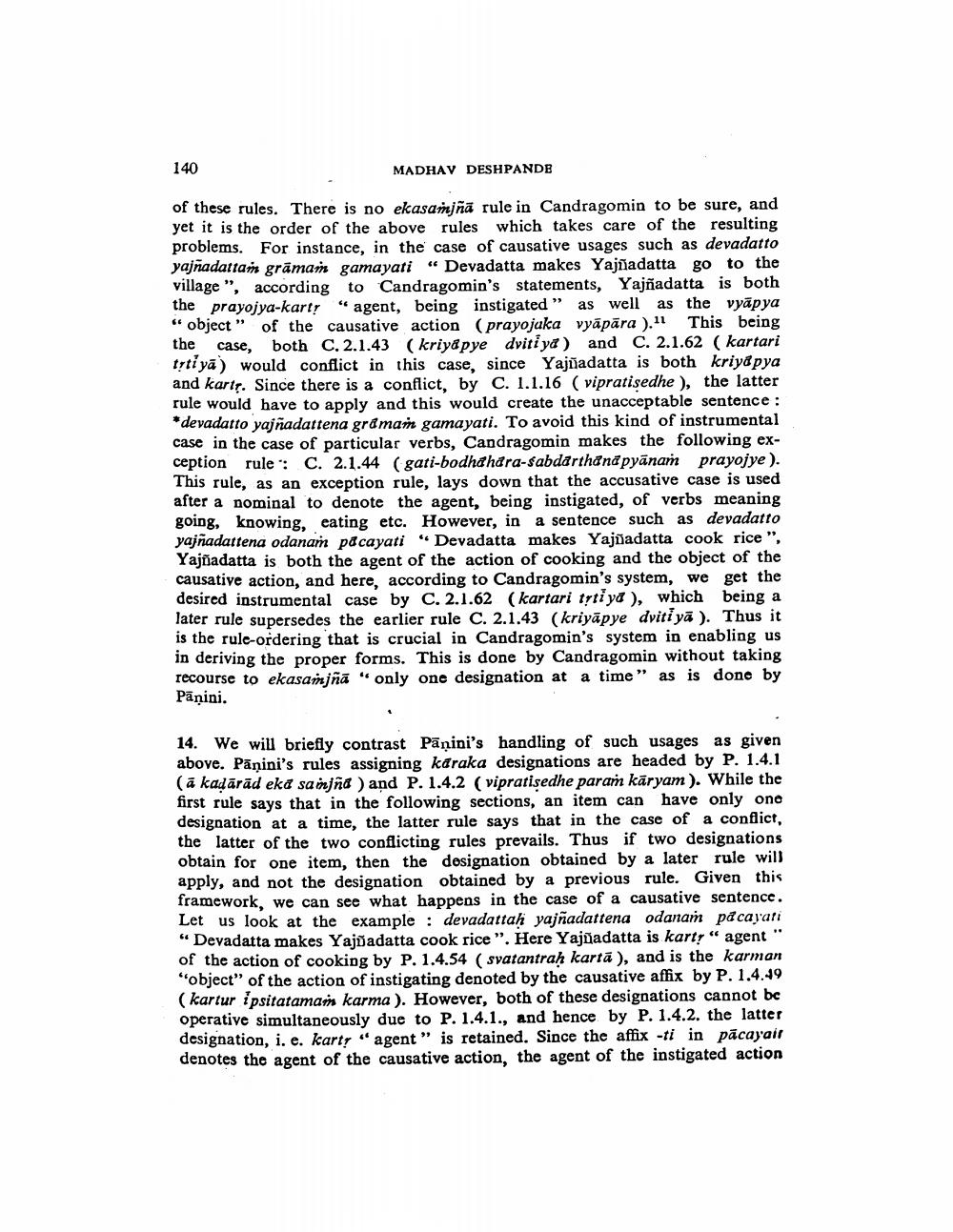Book Title: Candragomins Syntactic Rules Some Misconceptions Author(s): Mahadev Deshpande Publisher: Mahadev Deshpande View full book textPage 8
________________ 140 MADHAV DESHPANDE of these rules. There is no ekasamjñā rule in Candragomin to be sure, and yet it is the order of the above rules which takes care of the resulting problems. For instance, in the case of causative usages such as devadatto yajñadattan grāmam gamayati “ Devadatta makes Yajñadatta go to the village", according to Candragomin's statements, Yajñadatta is both the prayojya-kartr "agent, being instigated ” as well as the vyāpya "object" of the causative action (prayojaka vyāpāra ).1 This being the case, both C. 2.1.43 (kriya pye dviti ya ) and C. 2.1.62 (kartari tyti yā) would conflict in this case, since Yajñadatta is both kriy&pya and karts. Since there is a conflict, by C. 1.1.16 ( vipratisedhe ), the latter rule would have to apply and this would create the unacceptable sentence : * devadatto yaiñadattena gråmai gamayati. To avoid this kind of instrumental case in the case of particular verbs, Candragomin makes the following exception rule : C. 2.1.44 (gati-bodhdhdra-sabdarthana pyāna prayojye). This rule, as an exception rule, lays down that the accusative case is used after a nominal to denote the agent, being instigated, of verbs meaning going, knowing, eating etc. However, in a sentence such as devadatto yajnadattena odanam på cayati " Devadatta makes Yajñadatta cook rice" Yajñadatta is both the agent of the action of cooking and the object of the causative action, and here, according to Candragomin's system, we get the desired instrumental case by C. 2.1.62 (kartari trtiya ), which being a later rule supersedes the earlier rule C. 2.1.43 (kriyāpye dviti yā). Thus it is the rule-ordering that is crucial in Candragomin's system in enabling us in deriving the proper forms. This is done by Candragomin without taking recourse to ekasaminā "only one designation at a time” as is done by Panini. 14. We will briefly contrast Pāṇini's handling of such usages as given above. Pāṇini's rules assigning karaka designations are headed by P. 1.4.1 (a kadārād eka sa injña ) and P. 1.4.2 (vipratisedhe param kāryam). While the first rule says that in the following sections, an item can have only one designation at a time, the latter rule says that in the case of a conflict, the latter of the two conflicting rules prevails. Thus if two designations obtain for one item, then the designation obtained by a later rule will apply, and not the designation obtained by a previous rule. Given this framework, we can see what happens in the case of a causative sentence. Let us look at the example : devadattah yajñadattena odanam på cavali “Devadatta makes Yajūadatta cook rice ". Here Yajñadatta is karty“ agent" of the action of cooking by P. 1.4.54 (svatantrah kartā ), and is the karman "object" of the action of instigating denoted by the causative affix by P. 1.4.49 (kartur ipsitatamam karma ). However, both of these designations cannot be operative simultaneously due to P. 1.4.1., and hence by P. 1.4.2. the latter designation, i. e. kartr "agent” is retained. Since the affix -ti in păcayair denotes the agent of the causative action, the agent of the instigated actionPage Navigation
1 ... 6 7 8 9 10 11 12 13
